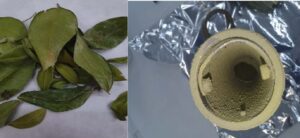Generación de micropartículas con propriedades bioactivas a partir del extracto de Myrtus communis mediante tecnología supercrítica
AUTORA : Inass Aghziel
TUTORAS: Dra. Clara Pereyra y Dra. María Calderón
GRADO: Biotecnología
CURSO: 2021-2022
RESUMEN:
Nowadays, there is an increasing interest in antioxidants of natural origin and green technologies. In this context, the use of the Supercritical Antisolvent Extraction (SAE) technique arises for the precipitation of antioxidant particles from myrtle leaves.
Myrtus communis L. is a plant belonging to the Myrtaceae family that has a high concentration of bioactive compounds, including essential oils, flavonoids and tannins. These compounds have been shown to have high antioxidant, anti-inflammatory, antibacterial and antitumor activities, making myrtle an element of possible protection against inflammation, cardiovascular diseases and certain types of cancer.
This Final Degree Project’s focus has been on obtaining particles with a high antioxidant capacity from myrtle leaves with supercritical technology, carrying out a design of experiments to verify how the different operating variables (pressure, temperature, injection of extract) the characteristics of the particles obtained.
For this reason, a conventional extraction of the myrtle leaves has been carried out, from which the particles have been precipitated by SAE at different operating conditions. In order to characterize the extracts and the consequent precipitates, the antioxidant capacity has been analyzed by DPPH, the total phenolic content, as well as the size and morphology of the particles by SEM microscopy. Micrometric particles with a diameter in a range of 0.423 and 0.988μm have been obtained, which showed a higher antioxidant activity than the extracts from which they come, although the phenolic content in both did not differ significantly.
In order to verify the efficacy of the products obtained, tests were carried out on cultures of the macrophage cell line RAW 264.7, in which oxidative stress has been induced with tBHP and the antioxidant effect of the extract and the microparticles on cell viability was evaluated by MTT. As well as an assay of the expression levels of the antioxidant enzymes Cat, Sod1 and Sod2 against oxidative stress in the presence of microparticles. It was concluded that microparticles at 1μM are the ones that best reverse cellular oxidative damage, due to their high antioxidant activity.


